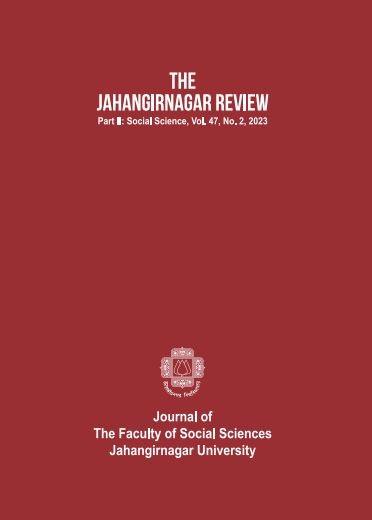Rural Land Use Change and Its Effect on Livelihood of Natima Union, Jhenaidah
Main Article Content
Abstract
Land is an infrequent and essential resource in Bangladesh. Over the last few decades, the rural land use pattern has drastically changed mainly in settlements, waterbodies, and agricultural land use. This study illustrates the changes of land use and its effect on livelihood at Natima Union. Land use data were analyzed to historic variation and changing patterns of land uses in Natima Union. The approach used in this study to classify satellite imagery and change detection based on Satellite Imageries Landsat TM 1987 to 2017, Landsat TM, and Landsat ETM for using supervised classification methods and maps consisted of four land use categories. In the comparison of classified imageries, there were massive changes in waterbodies into agricultural land. About 20%, 8%, and 2% of waterbody were changed to agricultural land and settlement in the decades respectively 1987-1997, 1997-2007, and 2007-2017. The economy of Natima Union is mainly based on agriculture, besides this with the increase of settlement area trade and business, service sectors, etc. are up-rising sources of household income. A questionnaire survey was also conducted to know about cropping patterns and its changing nature in the study area. Although grain crops like paddy and wheat cultivation are decreasing, due to modern technology rice production is quite good. Now farmers are gradually interested in mango and leguminous crops like pulse cultivation as use of their land in more productive way. Population pressure was found as one of the major driving forces to determine land use and land use changes in the study area effects on livelihood patterns. On the basis of changes, new policy has to implement for better land management.

